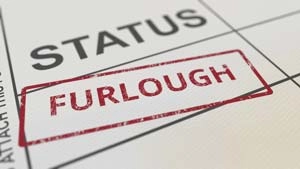Experts have warned that the end of furlough and the boost to Universal Credit could lead to an ‘avalanche of homelessness’. The government intends to end these furlough schemes in September which combined with the eviction ban having ended May 31st there is serious concern.
Further, the end of furlough might led to a rise in unemployment. Many are concerned that once furlough ends 30th September 2021 that there are likely to be an increase in redundancies.
Housing issues due to the end of furlough
We have previously discussed the Eviction Ban in more detail – Eviction ban extension due to end.
Prior to the pandemic repossessions and rental evictions were at seven households a day. Since the lifting of the eviction ban, landlords can immediately serve notice of eviction on their tenants on the grounds of anti-social behaviour. Otherwise, offer four weeks’ notice under a section 8 order if in rent arrears. Otherwise tenants have four months’ notice period.
2.4 million are still benefiting from furlough, which has protected jobs. This and the universal credit boost have helped people pay their rent.
How long is the notice period for eviction?
This depends on the type of tenancy that you have. Anyone with Assured Shorthold Tenancy (AST) runs with no fixed end date. If you have one of these then your landlord would need to provide you with a ‘notice to quit’. If you have a fixed term AST then the rules are similar.
Prior to the pandemic landlords must provide two months’ notice, however these have increased. If you were given notice after 29 August 2020 to 31 May 2021 then your landlord must give you 6 months to leave the property. Further, if you have been served an eviction notice since the end of the eviction ban, then you have 4 months to leave.
If you have been served a section 8 notice, then these could be significantly earlier.
You can find more information on the government website here.
What happens if I do not leave?
If you do not leave then the landlord must apply for a possession order. If the court provides a possession order and you still do not leave then a warrant for possession must be made which means bailiffs can evict you.
How can we help?
Our housing experts can help you to negotiate with your landlord and help to mitigate any risk of homelessness. We have a Legal Aid license and therefore can help those who are unable to access legal advice because of their financial situation. You can contact us today or read more here.
Employment issues due to the end of furlough
The Coronavirus Retention Scheme has helped businesses to keep employees without the need to terminate employment. The scheme has supported 11.6 million jobs throughout the pandemic. The government have reported that there are 2.4 million people on furlough as of 31st May 2021. You can find the data here.
Do you retain your legal rights while furloughed?
You have the same rights during and at the end of furlough as you did while employed. Therefore, you could still bring a claim against unfair dismissal and are entitled to redundancy.
What should I do if I am being made redundant?
Being made redundant should not be taken personally. You are not being sacked, therefore should only happen if your role no longer exists. The end of furlough may lead to your role being made unnecessary, however your employer must treat you fairly.
You may be able to receive full financial package. This depends on your length of service and your age. The statutory amount is as follows:
- If you are under 22 years old then half a weeks’ pay for every full year of employment;
- If you are over 22 years old and under 41 years old then a full weeks’ pay for each year of employment; and
- If you are over 41 years old then one and a half weeks’ pay for each year of employment.
It is important to get the money you are entitled; we can help you understand your rights and employer’s responsibilities. For more information see our employment pages here.
If you want to know more about your legal rights regarding the end of furlough then contact us here.
